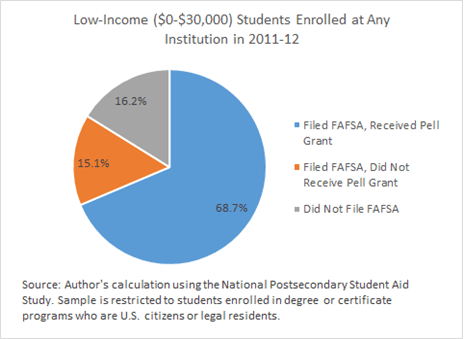
What Can a Pell Grant Be Used For?
A Pell Grant is a need-based federal aid program that can assist with college expenses. It’s especially popular among low-income undergraduate students.
The Pell Grant program is authorized by the Higher Education Act of 1965 (HEA), with most funds coming from annual discretionary appropriations; however, mandatory appropriations have seen an increasing role in recent years.
What is a Pell Grant?
The Pell Grant is a federal grant designed to assist with college expenses. It’s one of the most popular types of aid and doesn’t need to be repaid.
Your Pell Grant award amount is determined by a variety of factors, such as your expected family contribution (EFC), school costs of attendance and whether or not you’re enrolled full time. In case you take less than 12 credits each semester, however, the award will be prorated accordingly.
Each term, you’ll receive your award which typically covers tuition, fees, room and board costs. Any remaining funds – known as a “credit balance” – are paid directly to you.
The Pell Grant is funded through both discretionary and mandatory appropriations. Congress sets discretionary funding in the annual appropriations process, supplemented with mandatory allocations outlined in the Higher Education Act (HEA).
Who is eligible for a Pell Grant?
The Pell Grant is one of many federal grants available to undergraduate students with exceptional financial need, helping them pay for college.
Unlike other forms of aid, the money does not need to be repaid. Typically, funds are disbursed each school term or at least twice a year.
It is essential to remember that money from educational grants must only be used for school-related expenses, such as tuition, fees, room and board, supplies, books and other related costs.
Additionally, the amount of Pell Grant money you receive can be affected by your eligibility status. For instance, if you have been convicted of a crime or are subject to involuntary civil commitment after serving time for sexual offense, then receiving this grant money will not be possible.
Your school’s registrar is responsible for verifying your Pell Grant eligibility and making sure you meet all requirements set forth by the program. Withdrawing from courses, failing to maintain enrollment or making poor academic progress at your school could revoke your grant eligibility.
How do I apply for a Pell Grant?
Financial aid can come in many forms, such as grants and scholarships. Furthermore, some students may qualify for federal loans as well.
Pell Grants are one of the primary forms of student aid awarded by the federal government. These grants are need-based, meaning they don’t need to be paid back except in rare instances.
Applying for a Pell Grant requires completion of the Free Application for Federal Student Aid (FAFSA). After your FAFSA is submitted, your school’s financial aid office will assess your eligibility.
Your school will then send you an award letter that outlines the type and amount of aid awarded to you. It’s essential to note that a Pell Grant cannot cover tuition costs on its own; other federal and non-federal aid, such as loans, must still be utilized in conjunction with it.
Remember, Pell Grants are an excellent starting point for students and can give them a helping hand in financing college. However, many will need to utilize a combination of scholarships, grants and federal/private loans in order to cover all their education-related costs.
What can I use my Pell Grant for?
Pell Grants can be used to cover college expenses such as tuition, books and supplies. They are intended to assist those students with the greatest financial need.
Funds for higher education are awarded based on the information you submit in the Free Application for Federal Student Aid. The Department of Education uses your family’s income and other factors to assess your eligibility.
Your enrollment status and how many courses you plan to take will also influence the amount of money awarded by a grant program. For instance, if you’re only part time, then there is less likelihood that you will receive all available funds.
Similar to other forms of financial aid, a Pell Grant should only be used for educational purposes and does not typically need to be repaid – with certain exceptions.
